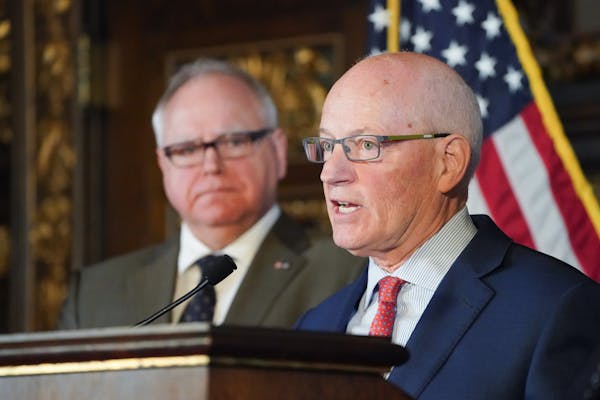Minnesota's top budget official is expecting the state to slip into the red for the first time in years, as revenue drops and costs increase to battle the coronavirus pandemic.
An updated budget projection on Tuesday is likely to show the first notable deficit since the state crawled its way out of the Great Recession, triggering a little-known state law that allows lawmakers to dip into a more than $2 billion reserve fund to stop the bleeding.
"I can't imagine we're not in a deficit situation," said Minnesota Management and Budget Commissioner Myron Frans, qualifying that he hasn't seen the final numbers yet. State officials usually get economic forecasts twice a year, in February and November. But the financial uncertainty caused by the pandemic prompted an unprecedented additional budget projection update in May.
Without an updated projection, lawmakers legally can't dip into the state's budget reserve account, which was created in 2014 after years of patching deficits. The budget reserve law required automatic transfers to an account when the state budget was overflowing.
That reserve is now up to $2.359 billion, Frans said, not including a more flexible cash-flow account of $350 million.
"Just think what it would be like if we had not put that money away and we had given it back in tax relief. Just think what we would be doing right now," he said. "I feel sorry for states that have not prepared themselves for this like we have."
It's a dramatic turnaround from February, when the state's economic forecast projected a $1.5 billion budget surplus. Since then, positive cases of COVID-19 in the state have topped more than 5,000 and Gov. Tim Walz shuttered schools, bars, restaurants and other public spaces to slow the spread of the virus. More than 580,000 Minnesotans have filed for unemployment since mid-March.
Tax collections from February and March were $103 million less than projected in the economic forecast, and tax filing deadlines have been delayed into the summer.
The state has received nearly $2 billion in aid from the federal government, but in most cases it can be used only to cover specific COVID-19 related costs. It cannot be used to make up for lost revenue during the pandemic.
Legislators, who were planning to spend the surplus on projects from classrooms to tax cuts, have already dramatically tamped down expectations.
Senate Majority Leader Paul Gazelka, R-East Gull Lake, acknowledged that the length and shape of the economic recovery remains a "great unknown about the future."
"There are still some areas I think we should spend money, and that's why we provided resources for the governor for COVID-19 and that's why we're doing some mostly one-time spending on the tax bill," he said Thursday, adding that a bonding bill also remains a priority.
Sen. Dick Cohen, DFL-St. Paul, said this week that the "simple arithmetic" suggests that right now, if lawmakers did nothing else, the state would face a deficit of about $200 million. The situation could worsen in the second quarter, which covers April through June.
"That will be the end of the budget reserve," he said during a floor debate over new tax breaks. "That means we have no money left, no money left to do anything for the rest of the year relative to the COVID crisis. … We will have our hands tied in what is the biggest health crisis this country has faced arguably since the 1918 flu pandemic."
But House Democrats are advocating to spend some now to help Minnesotans later, pushing an economic assistance package that would direct more state money for housing assistance, health workers and school employees.
House Majority Leader Ryan Winkler, DFL-Golden Valley, said the need is "to save lives now but also to make sure that we are ready to come back economically afterwards."
"Despite the challenges and uncertainties ahead of us, we are confident in our ability to pull through," he said.
Briana Bierschbach • 651-925-5042
Twitter: @bbierschbach
Torey Van Oot • 612-673-7299
8 months in jail for Blaine man who caused 120-mph crash hours after he was caught speeding

Daughter sues St. Paul, two officers in Yia Xiong's killing

